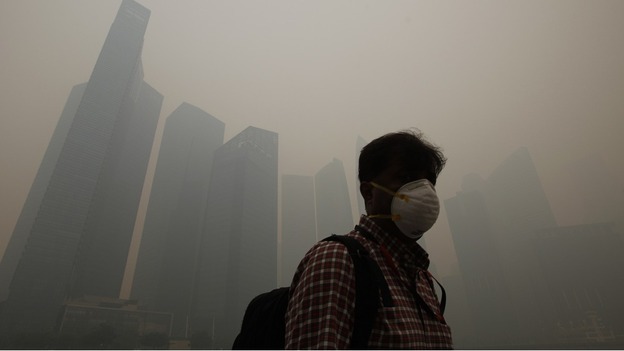
Particle Sensing
Particle Sensing is the act of detecting dust in the air, and characterizing that dust and its potential health effects on those who may breathe it.
Why are we concerned about particles? because humans now make more dust than any natural process on earth.
From EPA/600/R-95/115
There are four major factors necessary to determining what particles are in the air and addressing the source, particle concentration, particle size, particle type, and particle source. Different particle sensing strategies are useful in determining these factors.
Particle Concentration
Particle concentration is the density of particles in the air. This is usually expressed as mass per volume, i.e. micrograms or milligrams per cubic meter, expressed μg/m3 or mg/m3.
Particle Size
Particles are measured in micrometers (millionths of a meter, or μm), but when talking about particle sizes, the literature speaks of idealized particles. Shorthand, such as 'PM10' meaning, particulate matter where the mean particle is equal to 10μm in diameter. but by diameter, the literature means "mass median aerodynamic diameter" which is a way of saying particles that fall through the air at the same rate as a perfect sphere of 10μm.
Particle Type
This can be conducted with a microscope for crystals, and using lab techniques for other types of particles.
Particle Source
Usually directional and time-stamped data from multiple points are needed to extrapolate source, along with an understanding of particle type.
Researchers speak of two types of emissions that have a blurry line between them, 'process stream' emissions and 'fugitive emissions.' Process stream emissions are inherent to a process, like ash from a fire, and fugitive emissions are ancillary, like the dust kicked up bringing wood to a fire [EPA 3-2].
Particles of Concern
There are a lot of problematic dust particles. Generally speaking, particles smaller than 10μm get lodged in the lungs. But shape, material, and the sharpness of the particles matters. For instance, recently broken particles are sharper and more dangerous than dust that's been blowing around a while and been rounded out.
Silica is currently a Public Lab monitoring project. For silica, particles smaller than 5μm are considered the most dangerous.
Add more here
"FIGURE CAPTION: The family of chemicals that make up Particulate Matter are subdivided into the different regulated pollutants."
 Source:http://www.powermag.com/blog/pm2-5-more-than-just-dust/
Source:http://www.powermag.com/blog/pm2-5-more-than-just-dust/
Strategies and Sensors
Electronic sensors
Most electronic sensors are essentially a light that gets interrupted by a particle, with a camera or other optical sensor watching. The Speck uses a Syhitech DSM501A The Dustduino Uses a Shenyei PPD42NS
Sticky Pads
Essentially tape, sticky pads have the advantage of capturing a record of actual particles that can be analyzed later. They can be scanned and digitized for standardized readings. More can be found on the Sustainable Aggregates website.
